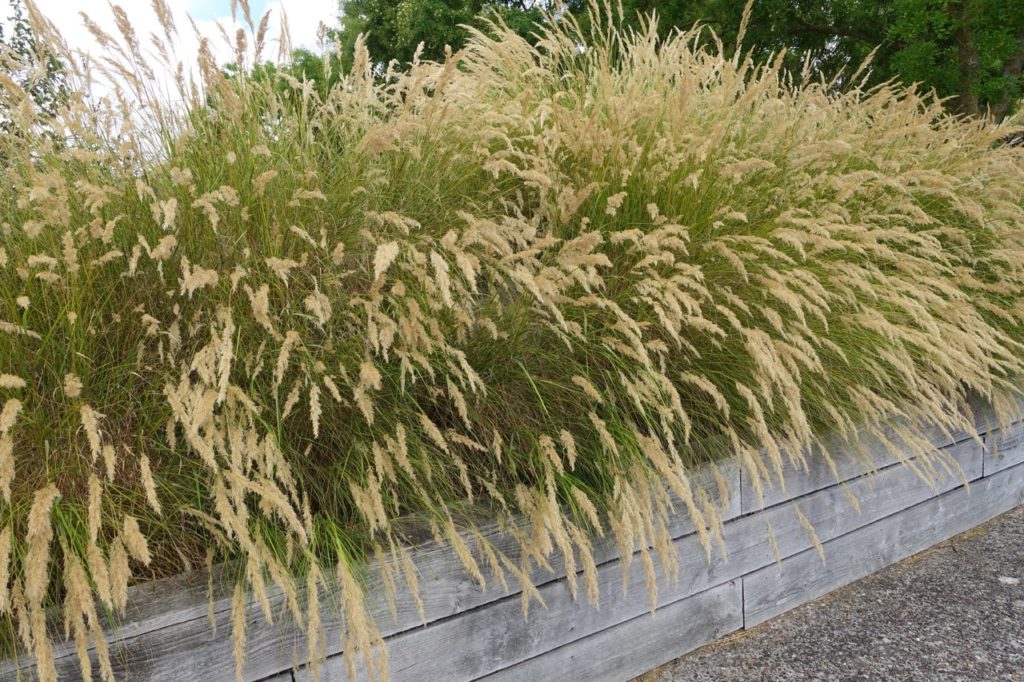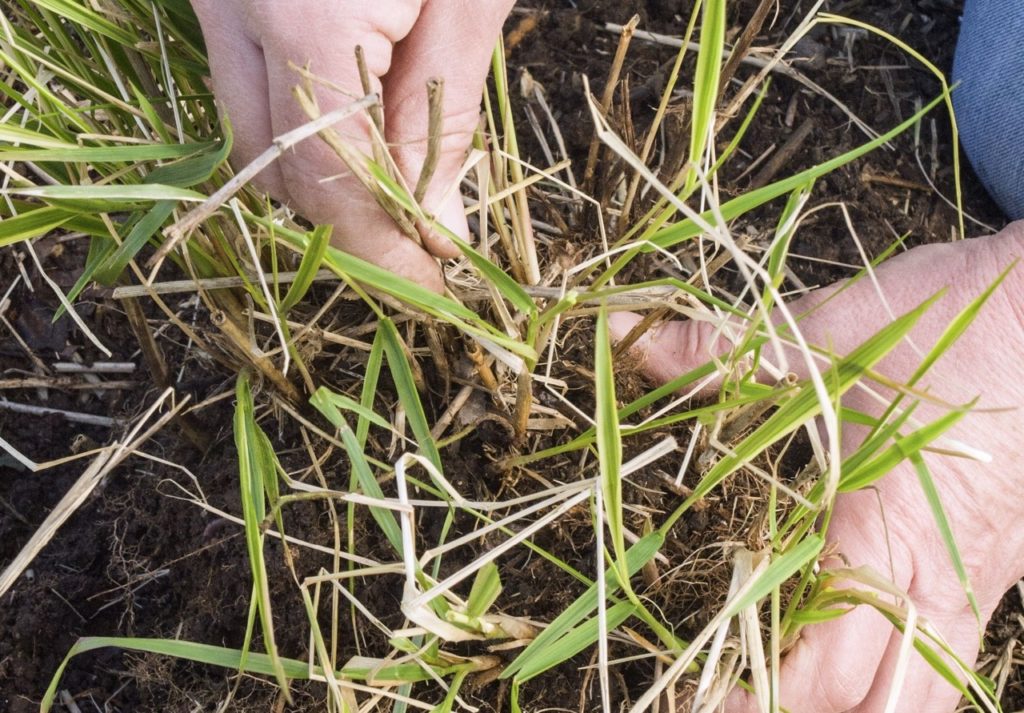GRASSES > STIPA > TENUISSIMA

Elizabeth is a Permaculture Garden Designer, Sustainability Consultant and Professional Writer, working as an advocate for positive change. She graduated from the University of St. Andrews with an MA in English and Philosophy and obtained a Diploma in Applied Permaculture Design from the Permaculture Association.
Reviewed By PETER LICKORISH

Peter is a Horticulture Lecturer and self-employed Horticulturist, with a passion for diverse areas of the industry - from garden design to the science behind plant growth and propagation. He has completed the Royal Horticultural Society’s Master of Horticulture (MHort) Award and lectures on RHS courses at Bedford College.
Contributions From PETER READER

Peter Reader transitioned from a career as a GP to pursue his passion for garden design. He earned a Diploma in Garden Design with Distinction from the prestigious KLC School of Design and is an RHS Silver-Gilt award winner. Peter is also a member of the Society of Garden Designers.
STIPA GUIDES
Mexican Feathergrass
Ornamental grasses can be great additions to prairie planting, flower borders, or containers.
And Mexican Feathergrass is one of many great options to consider.
“I like grasses in a garden because there is a lot of movement in them,” shares Garden Designer Peter Reader.
“They also add a lot of texture as you can see through them, so I like to play around with them as an ornamental in a garden.”
Mexican feathergrass: Stipa tenuissima, or Nassella tenuissima as it is now officially known, is a grass native to the southwest of the United States, northern Mexico and Argentina.1Plant Database. (n.d.). Lady Bird Johnson Wildflower Center – the University of Texas at Austin. Retrieved March 24, 2023, from https://www.wildflower.org/plants/result.php?id_plant=nate3
“This grass is well proportioned for use as an edge to a border when given room to gently spill over the side,” shares Master Horticulturist Peter Lickorish.
“It is surely one of the softest and most tactile plants you could ever grow.”
Overview
| Botanical Name | Nassella tenuissima / Stipa tenuissima |
| Common Name(s) | Mexican Feather Grass |
| Plant Type | Perennial Grass |
| Native Area | Central and South America |
| Hardiness Rating | H4 |
| Foliage | Semi-evergreen |
| Flowers | Feathery flowering panicles |
| When To Plant | March-September |
| When To Prune | March |
Sunlight
Preferred
Full Sun
Exposure
Exposed or Sheltered
Size
Height
0.5 – 1M
Spread
0.1 – 0.5M
Bloom Time
Summer
Soil
Preferred
Most fertile soils
Moisture
Moist but well-drained
pH
Any
In the UK, it is one of the most popular ornamental grasses.
It is not really considered to be an invasive problem here like it is in other parts of the world, but it can still self-seed and pop up in other areas of your garden.
This is a semi-evergreen perennial grass, which takes its name from the feather-like fronds of seed heads which form above the foliage in summer.

Starting as upright clumps of silvery green grass, the plant turns a beautiful brownish beige in late summer.
How To Grow Mexican Feather Grass
Plant out either self-sown plants, plug plants or larger pot-grown specimens into their final growing positions any time from March to the end of summer.
Place plants in a spot with full sun, in a well-drained soil or potting medium.
Simply create a planting hole large enough to accommodate the roots, pop the plant into the hole, firm it in and then water it well.

If you have heavy soil, it can be useful to amend it by adding a handful of sand or horticultural grit to the base of your planting hole.
If you plan to keep your Mexican feather grass in a container, make sure that the pot you select has good drainage, and that water can drain away freely from the base.
Fill it with a peat-free potting mix, with added grit to improve drainage.
Growing From Seed
While many gardeners will choose to purchase and plant out plugs or larger clumps of pot-grown Mexican feather grass, which can be purchased from garden centres and plant nurseries in spring and summer, it is also possible to grow this plant from seed.
Seeds are sown in March or April in a cold frame.

Seeds can be sown together in pots and planted out as clumps, or pricked out into individual pots and grown out to create more plants.
Either strategy can work well, and even individual blades should quickly establish and grow into clumps in the right setting.
Ongoing Plant Care
Caring for this ornamental grass is very easy and straightforward, making it a great choice for a low-maintenance space as long as the environmental conditions are right.
This plant is unfussy about soil type or pH, as long as waterlogging does not occur.

Once established, it is drought tolerant and feeding is not required.
This plant does best in poorer soils, as soil that is too rich can encourage floppiness.
Overwintering
Stipa tenuissima is hardy throughout much of the UK, coping with winter temperatures between -5 and -10°C.
Aspect
This grass can be placed in many different positions around a garden and will thrive in any aspect as long as it receives plenty of sun.
Pruning
Unlike deciduous ornamental grasses, this grass is semi-evergreen, so it does not need to be cut back late in the winter as you would do with deciduous types.
Instead, in spring, comb through with gloved hands or use a rake to get rid of older foliage and seed heads.

You should find that this is just like combing hair, and the dead growth should come away freely.
If the plant is looking messy or the grass has become drenched in a deluge, you can also cut it back hard towards the end of spring or early summer.
New foliage will soon emerge.
Propagating
As mentioned above, this is a plant which can gently self-seed.
This is not usually an issue, however, and plants that pop up in unwanted positions are fairly easy to remove, replant or give away.

Another option is simply to divide existing clumps.
The best time for division is between the middle of spring and early summer.
“Dividing or lifting off-sets regularly can keep it as a slender hedge and this way I find plants generally reach a maximum height of around 50cm,” adds Peter.
Companion Planting
S. tenuissima works very well with herbaceous perennials and other ornamental grasses in a border, bed or container.
Some flowering plants to consider planting alongside this grass are:
- Achillea
- Agastache
- Alliums
- Asters
- Cosmos bipinnatus
- Echinacea purpurea
- Eryngium
- Helenium
- Knautia macedonica
- Penstemons
- Rudbeckia
- Salvias
- Sedums
- Verbenas
- Veronicastrum
Common Problems
This is a plant that is usually pest and disease free.

Issues only occur due to waterlogged soil or damage due to heavy rainfall.
As long as the drainage is good and the plant gets plenty of sun, there should not be many issues.
Does Mexican Feather Grass Spread Quickly?
Though it can self-seed, and pop up elsewhere in your garden, it is not considered to be a problem in UK gardens.

Clumps spread fairly readily when in the right location and can be great for spreading to fill gaps in a bed or border.
References
- 1Plant Database. (n.d.). Lady Bird Johnson Wildflower Center – the University of Texas at Austin. Retrieved March 24, 2023, from https://www.wildflower.org/plants/result.php?id_plant=nate3

